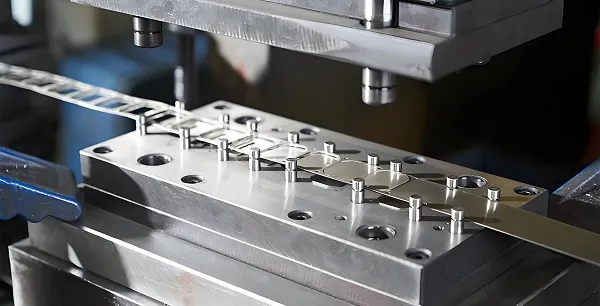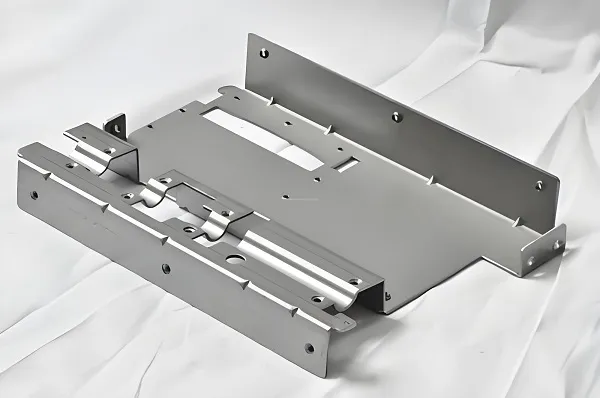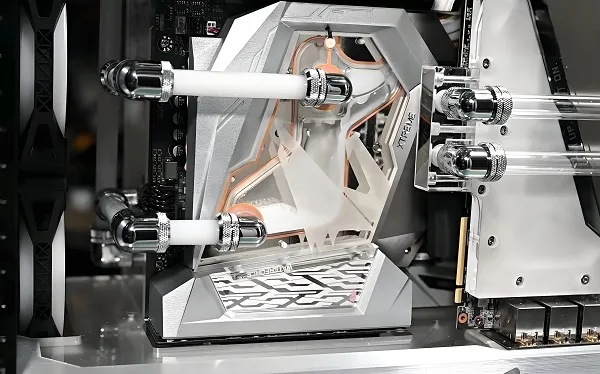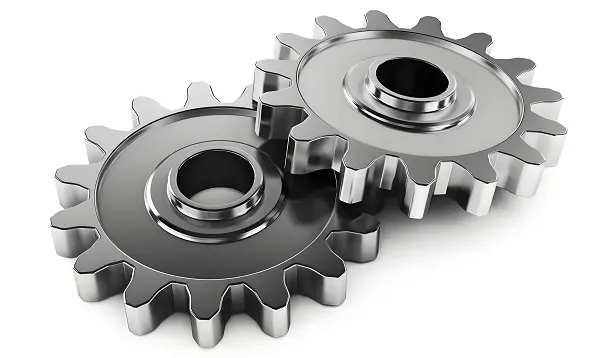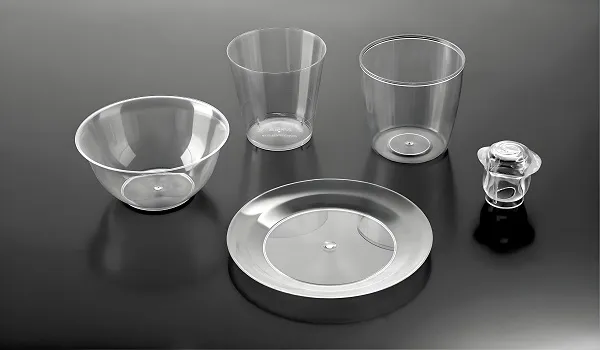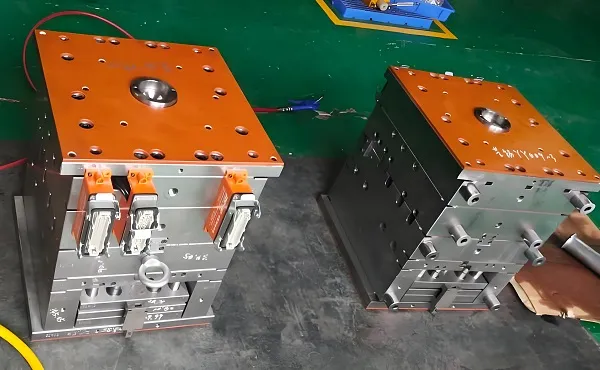CNC brake disc components are precision-machined parts that form the core of braking systems, responsible for converting kinetic energy into heat during deceleration. These components, including rotor faces, hub flanges, and cooling vanes, require exceptional dimensional accuracy and thermal stability to ensure safe, reliable braking. Custom CNC brake disc Parts are tailored to specific vehicle models, performance needs, and operating conditions, optimizing stopping power and durability.
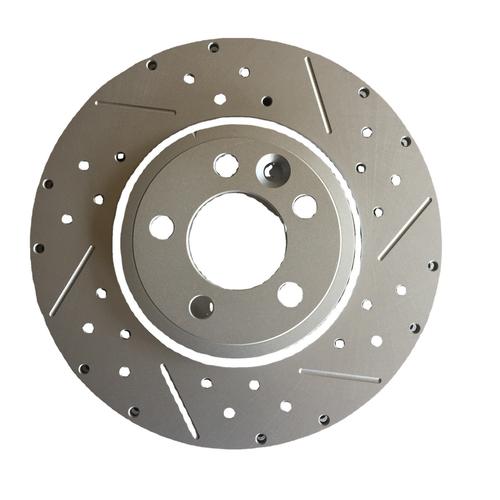
1. Why Custom CNC Brake Disc Components
Standard brake discs often fail to meet the unique demands of specialized vehicles—whether high-performance racing cars, heavy-duty trucks, or modified off-road vehicles. Custom CNC brake disc components solve this by delivering precise fits for specific wheel hubs, caliper sizes, and axle configurations that generic discs cannot match.
Customization enables engineering of critical features like optimized vane patterns (for enhanced cooling), drilled or slotted rotor faces (to reduce brake fade), and lightweight designs (to reduce unsprung weight) that standard discs lack. For racing or performance applications, custom discs can be tailored to handle extreme temperatures (over 800°C) and repeated heavy braking, while for commercial vehicles, they can be reinforced to withstand heavy loads. Additionally, custom CNC machining allows for rapid prototyping of new designs, accelerating development for specialty vehicles or unique braking systems.
2. CNC Brake Disc Components Processing Technologies
5-Axis CNC Milling: Enables simultaneous machining of complex features like curved vane profiles and multi-angle mounting surfaces in a single setup, ensuring precise alignment of cooling channels and hub flanges.
CNC Turning: Creates the primary rotor face and outer diameter with tight tolerances (±0.03mm), while live tooling adds details like bolt holes, keyways, and chamfers without secondary operations.
Precision Grinding: Finishes rotor faces to ultra-smooth surfaces (Ra 0.8μm or better) and parallelism within 0.02mm, ensuring uniform contact with brake pads and minimizing vibration.
Laser Drilling: Creates precise holes in rotor faces for weight reduction and gas evacuation, with controlled hole diameter (3–6mm) and spacing to prevent cracking under thermal stress.
EDM (Electrical Discharge Machining): Used for intricate features like fine slots or cooling passages in hardened materials, ensuring accuracy in areas inaccessible to conventional tools.
3. CNC Brake Disc Components Processing Flow
Design & Engineering: Collaborate with clients to define specifications (rotor diameter, thickness, bolt pattern) and performance requirements (thermal capacity, weight targets). Use CAD software and FEA simulations to optimize vane geometry and heat dissipation.
Material Selection: Choose heat-resistant materials based on application—cast iron for street use, high-carbon steel for performance, or aluminum alloys with carbon ceramic composites for racing.
Blank Preparation: Cut raw material into disc blanks using plasma cutting or sawing, ensuring consistent thickness and diameter for subsequent machining.
CNC Machining: Use 5-axis milling and turning to shape the rotor face, hub flange, and cooling vanes. Precision tools cut features like slots, holes, or mounting surfaces to exact tolerances.
Heat Treatment: Apply processes like annealing (to relieve stress) or quenching (to harden surfaces to 200–250 HB) to enhance wear resistance and thermal stability.
Surface Finishing: Grind rotor faces to achieve parallelism and smoothness, then apply anti-corrosion coatings (zinc plating, paint) to non-friction surfaces.
Quality Testing: Verify dimensions with CMMs, check runout (maximum 0.05mm) using dial indicators, and conduct thermal cycling tests to ensure performance under extreme conditions.
4. CNC Brake Disc Components Materials
Cast Iron (Gray Iron, Ductile Iron): Most common for street vehicles, offering excellent heat dissipation and friction characteristics. Gray iron (class 20–40) provides good wear resistance; ductile iron adds toughness for heavy-duty applications.
High-Carbon Steel (1045, 1050): Used for performance discs, combining high strength (600+ MPa tensile) with good thermal conductivity. Resists warping under repeated heavy braking.
Aluminum Alloys (6061-T6): Used in lightweight, high-performance discs (often paired with carbon ceramic inserts), reducing unsprung weight by 30–50% compared to iron.
Carbon Ceramic Composites (CCC): Premium material for racing and luxury vehicles, offering exceptional heat resistance (up to 1,200°C), low weight, and long service life—though at higher cost.
Stainless Steel (304, 410): Used for hub flanges and mounting hardware, providing corrosion resistance in wet or salty environments.
5. CNC Brake Disc Components Applications
Automotive Performance: High-performance cars, sports cars, and modified vehicles use custom discs with drilled/slotted faces and enhanced cooling vanes to handle aggressive driving and track use.
Racing (Formula 1, NASCAR): Carbon ceramic or high-carbon steel discs with intricate vane patterns, designed to withstand extreme temperatures and provide consistent braking during races.
Commercial Vehicles: Heavy-duty trucks, buses, and trailers use reinforced cast iron discs with thicker rotor faces and robust hub flanges to handle high payloads and frequent stop-and-go cycles.
Off-Road Vehicles: Custom discs with sealed bearing surfaces and corrosion-resistant coatings, engineered to withstand mud, water, and debris in off-road conditions.
Motorcycles: Compact, lightweight discs with optimized diameters and mounting patterns, tailored to fit motorcycle calipers and wheel sizes while reducing rotational inertia.
Specialty Vehicles: Military vehicles, emergency response trucks, and industrial equipment use custom discs designed for specific duty cycles, from high-speed pursuits to heavy-load hauling.
6. CNC Brake Disc Components Performance Additions
Cooling Enhancements: Optimized vane designs (curved, directional) increase airflow by 30–50% compared to standard discs, reducing brake fade during prolonged use.
Friction Surface Treatments: Zinc-nickel plating or anti-corrosion coatings on non-contact surfaces prevent rust, while laser texturing on rotor faces improves pad bite and reduces noise.
Weight Reduction: Strategic machining of lightening holes, thin-sectioned hubs, and hollow vanes reduces rotational mass without sacrificing strength, improving acceleration and handling.
Heat Dissipation Features: Drilled holes (to release gas and water) and slots (to scrape pad debris) maintain consistent friction, critical for racing and performance driving.
Mounting Precision: Tight tolerance (±0.02mm) on hub bore and bolt holes ensures perfect alignment with wheel hubs, reducing vibration and brake judder.
7. CNC Brake Disc Components Common Questions
What makes CNC-machined brake discs better than cast ones?
CNC machining ensures tighter tolerances (runout < 0.05mm) and more precise vane geometries than casting, resulting in better balance, reduced vibration, and more consistent braking. It also allows for complex cooling features that casting cannot replicate.
How do materials affect brake disc performance?
Cast iron offers a good balance of cost and performance for street use; carbon ceramic excels in high-heat racing applications but costs more. High-carbon steel provides a middle ground, with better heat resistance than iron but lower cost than ceramics.
Can custom discs reduce brake fade?
Yes—custom designs with enhanced cooling vanes, larger surface areas, and heat-dissipating features reduce fade by maintaining lower rotor temperatures. For example, directional vanes can increase airflow by 40%, significantly delaying fade during heavy use.
What is the typical lifespan of custom CNC brake discs?
Street discs (cast iron) last 30,000–70,000 miles; racing discs (carbon ceramic) can last through multiple seasons with proper maintenance. Lifespan depends on driving style (aggressive braking reduces life) and environment (salt, debris accelerate wear).
Are custom discs compatible with standard brake pads?
Yes—custom discs can be engineered to work with OEM or aftermarket pads, though performance-oriented discs often pair best with high-friction pads designed for their specific material (e.g., ceramic pads for carbon ceramic discs).
Need custom CNC brake disc components for your vehicle? Whether you’re building a race car, upgrading a truck, or modifying an off-road vehicle, we can create discs tailored to your exact specifications. Share your vehicle model, performance goals, and usage conditions in the comments, and our team will provide design recommendations, material options, and performance projections. Let’s engineer brake discs that deliver stopping power you can trust!

